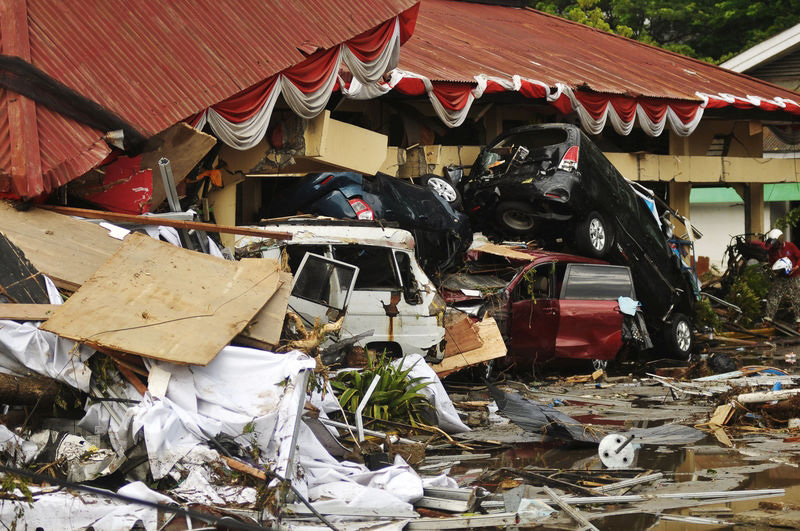


|
|
|
|
Dozens of people were reported to be still trapped in the rubble
of a hotel and a mall in the city of Palu, which was hit by waves as high as
six metres (20 feet) following the 7.5 magnitude earthquake.
With the death toll so far from Palu alone and reports only
slowly filtering in from Donggal, a region of 300,000 people north of Palu
and closer to the epicentre, authorities are bracing for worse to come.
Indonesia's Vice President Jusuf Kalla said the toll could rise
to thousands.
Hundreds of people had gathered for a festival on the Palu's
beach when the wall of water smashed onshore at dusk on September 28,
sweeping many to their deaths and destroying anything in its path. Indonesian
President Joko
Widodo was scheduled to visit evacuation centres in the city on
September 30.
The Head of the National Disaster Management Agency (BNPB),
Willem Rampangilei, told reporters in Sulawesi late on September 29 the death
toll from Palu had reached 420 people, according to news website Kompas.
"It's estimated that 10,000 refugees are scattered in 50
points in Palu city," he was quoted by Kompas as saying. "We are
having difficulty deploying heavy equipment to find victims under the rubble
of buildings because many of the roads leading to Palu city are
damaged."
Amateur footage shown by local TV stations showed waves crashing
into houses along Palu's shoreline, scattering shipping containers and
flooding into a mosque in the city.
Dozens of injured people were being treated in makeshift medical
tents set up outdoors.
Photos confirmed by authorities showed bodies being lined up
along the street on September 29, some in bags and some with their faces
covered with clothes.
"The tsunami didn't come by itself, it dragged cars, logs,
houses, it hit everything on land," Nugroho said, adding the tsunami had
travelled across the open sea at speeds of 800 kph (500 mph) before striking
the shoreline.
Metro TV reported hundreds of people had gathered outside a
collapsed mall on Sunday, looking for relatives feared trapped under rubble.
Nugroho said casualties and damage could be greater along the
coastline for 300 km (200 miles) north and south of Palu, including the
region of Donggala.
The Red Cross said staff and volunteers were heading to the
affected areas.
"We're now getting limited communications about the
destruction in Palu city, but we have heard nothing from Donggala and this is
extremely worrying. There are more than 300,000 people living there,"
Red Cross said in a statement.
"This is already a tragedy, but it could get much
worse."
Donggala's waterfront and port was extensively damaged, with
houses swept into the sea and bodies trapped in the rubble, according to a
Metro TV reporter on the scene.
Australia’s Prime Minister Scott Morrison said Indonesia had not
yet asked for help but he contacted President Joko Widodo overnight to offer
support and deep sympathies.
"It is horrifying,” he told ABC TV’s Insiders programme on
September 30.
"To secure the scene and make sure that issues do not
deteriorate further, I think, will be a big challenge,” he said. "But I know
that President Widodo will be taking a very direct and close interest in how
these issues are managed and if he needs our help, he’ll have it.”
The military has started sending in cargo planes with aid from
Jakarta and other cities, authorities said, but evacuees still badly needed
food and other basic necessities.
Palu's airport was damaged in the quake, but was reopened for
limited commercial flights on September 30, authorities said.
Indonesia sits on the Pacific Ring of Fire and is regularly hit
by earthquakes, including the devastating Boxing Day 2004 earthquake and
tsunami that killed more than 120,000 in northern Aceh province alone.
In August, a series of major quakes killed more than 500 people
in the tourist island of Lombok and destroyed dozens of villages along its
northern coast.
Palu was hit by tsunami in 1927 and 1968, according to BNPB.
|
Source: NDO